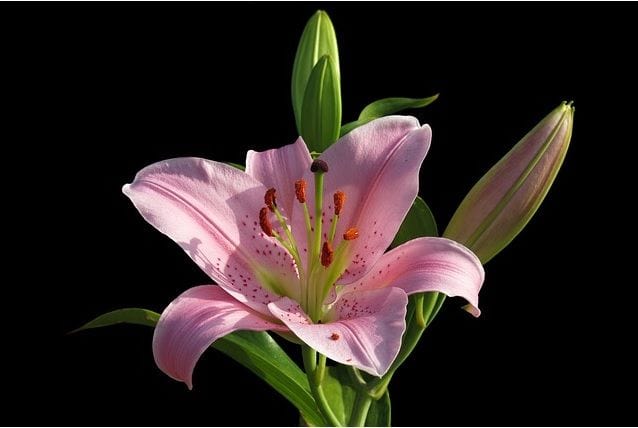Carpel and Pistil are the reproductive part of a flower in a plant, and they have a very slight difference between them. As carpel is composed of the stigma, style and ovary, while pistil is the union of the carpels or it can be the single carpel, so we can say that pistil is the fusion of carpels.
One can easily distinguish the number of carpels by checking the number of styles. In contrast, the number of pistils can be identified by the presence of the number of ovaries in flower.
The flower represents the angiosperms family of a plant, and they are the reproductive structure. A complete flower has distinctive reproductive structures and in specified colour and structure. So, a flower has four whorls, the lower whorls and the upper whorls.
The two upper whorls are known as reproductive whorl as they take part in reproduction. Further, these whorls are composed of microsporophylls and megasporophylls, where microsporophylls are termed as stamens and megasporophylls are termed as carpels (angiosperms).
The two lower whorls are known as accessory whorls as they directly do not participate in the reproduction of the flower. The third whorl is the male whorl and termed as androecium, while the fourth whorl is the female part and known as gynoecium. The role of the accessory pistil is to protect the essential organs, and mainly it attracts the pollinating insects.
The anthology is the branch of science that deals with the study of flowering plants and flowers and other properties of Angiosperms. With this, we will be studying the critical differences between the two main parts of the flower, which are carpel and pistil, with a brief description of them.
Content: Carpel Vs Pistil
Comparison Chart
| Basis for Comparison | Carpel | Pistil |
|---|---|---|
| Meaning | Carpels are the female reproductive part of a flower that may be present singly or in several. | Pistils are the female part of a flower-bearing seed or ovule. |
| Made of | Stigma, ovary and style. | One or numerous carpels. |
| Role | Produce egg cells. | No egg cell production. |
| Production of Seeds | Support in-production of seed and its dispersal. | It does not produce seed, and though work as a female part of the flower. |
| Fertilization | Carpels undergo fertilization process. | Pistil does not undergo fertilization. |
Definition of Carpel
The carpel is the innermost whorl present in flower, and it is the megasporophyll and seed-bearing, modified leaflike structure bearing ovule. Carpel consists of the ovary, style and stigma. It is the reproductive part of a flower.
The seed development within the carpel occurs, when the pollen grains from another flower enter and fertilize the egg within the carpel.
Definition of Pistil
The fusion or the union of one or more carpels make up the pistil. It is the female part of the flower, that is centrally located and has a swollen base, the ovary that has ovules or potential seeds, it also has a style or a stalk, emerging from the ovary, the stigma (the tip for receiving pollens) that can be of various shape and is quite sticky.
At the time of pollination, suitable pollen grains fall or stick to the stigma, that germinate by forming pollen tube. By growing down through the style, the pollen tubes transfer the sperm for fertilization of the ovules in the ovary.
The pistil is formed by the numerous leaflike structure enrolled within each other or of the carpels, that have one or more enclosed ovules. The carpel is the seed-bearing modified leaf, and there can be one carpel, two or more carpels (compound pistil) if the carpel is two or more in numbers in a pistil and united and so-known as syncarpous, while if the carpels are separated in flower so-known as apocarpous.
Key Differences Between Carpel and Pistil
Given below points are the essential one that highlight the differences between carpel and pistil:
- Carpels are the female reproductive part of a flower, that may be present singly or in several, on the other hand, pistils are also the reproductive part of a flower-bearing seed or ovule.
- Carpels are composed of Stigma, ovary and style, and pistils are the union of one or numerous carpels.
- Carpels produce egg cells, whereas, in the pistil, there is no egg cell production.
- Carpels support in the production of seed and its dispersal, although pistil does not produce seed, and though work as a female part of the flower.
- Carpels undergo fertilization process, while pistil does not.
Similarities
- Both carpel and pistils are the female part of a flower.
- Sometimes both are composed of style, stigma and ovary.
- Their role is to produce seeds, undergo fertilization, helping in seed dispersal and producing eggs.
Conclusion
Flowers are the most essential and characteristic feature present in the angiosperms. Flowers has various other parts also, which make it a complete one and these are Peduncle, Receptacle, Sepal, Petal, Stamen, Anther, Pistil, Stigma and Ovary.
Carpel and pistil are the interchangeable words when there are only one carpel and one pistil in flower. As both are the part of the female reproductive system. Even these have some common parts also that play a critical role in fertilization of a flower.


Leave a Reply